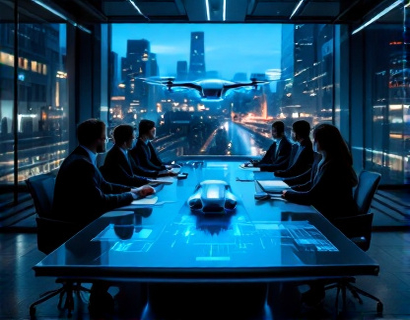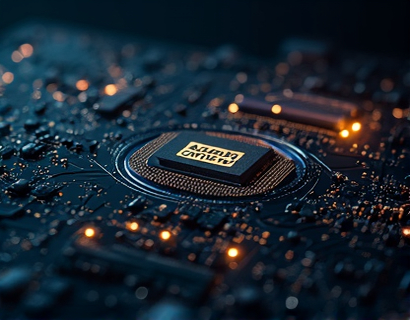Aerospace Tech Innovations: Leading the Charge in Efficiency and Safety Advancements
The aerospace industry stands at the forefront of technological innovation, driving advancements that redefine efficiency and safety in both aviation and space exploration. Recent years have seen a surge in groundbreaking developments, from materials science to propulsion systems, and from autonomous navigation to advanced avionics. This article delves into these cutting-edge technologies, offering industry professionals and visionaries a comprehensive look at the future of aerospace engineering.
The pursuit of efficiency in aerospace has led to significant breakthroughs in materials science. Advanced composites, such as carbon fiber reinforced polymers, have revolutionized aircraft structures. These materials offer superior strength-to-weight ratios, reducing the overall weight of aircraft and thereby improving fuel efficiency. For instance, the use of composite materials in the Boeing 787 Dreamliner has resulted in a 20% reduction in fuel consumption compared to similar-sized aircraft. Research continues to push the boundaries, with new materials like graphene and nanocomposites promising even greater strength and lighter weights.
Another area of material innovation is in the development of smart materials. Shape memory alloys and polymers can change their shape in response to temperature or electrical stimuli, enabling the creation of adaptive structures. These materials can be used to adjust wing shapes in real-time, optimizing aerodynamic performance under varying conditions. Such adaptability not only enhances efficiency but also extends the lifespan of aircraft components by reducing stress and wear.
Propulsion technology is another critical area where innovations are transforming the aerospace landscape. Electric and hybrid-electric propulsion systems are gaining traction, offering significant environmental benefits and potential cost savings. Electric motors are more efficient than traditional jet engines, converting a higher percentage of electrical energy into mechanical energy. Companies like Rolls-Royce and Airbus are actively developing electric propulsion systems for regional aircraft, with plans to extend these technologies to larger commercial planes in the future.
Hydrogen fuel cells represent another promising avenue for sustainable propulsion. Unlike batteries, hydrogen fuel cells generate electricity through a chemical reaction between hydrogen and oxygen, producing only water as a byproduct. This technology has the potential to significantly reduce carbon emissions and operating costs. NASA and several private companies are exploring the use of hydrogen fuel cells for both terrestrial and space applications, with the aim of powering future spacecraft and aircraft.
In the realm of aviation, autonomous and semi-autonomous systems are rapidly advancing, enhancing safety and operational efficiency. Autonomous flight control systems use a combination of sensors, algorithms, and machine learning to navigate and make decisions in real-time. These systems can detect and respond to potential hazards more quickly than human pilots, reducing the risk of accidents. For example, drones equipped with autonomous navigation have already proven their value in various applications, from delivery services to surveillance and inspection tasks.
Commercial airliners are also incorporating elements of autonomy. The concept of "fly-by-wire" systems, where computer-controlled actuators perform pilot commands, is becoming standard. Advanced avionics and flight management systems provide pilots with real-time data and automated assistance, reducing workload and improving decision-making. Future developments may include fully autonomous commercial flights, though regulatory and safety considerations will need to be thoroughly addressed.
Space exploration is equally benefiting from technological innovations. Reusable rockets, such as those developed by SpaceX, are dramatically lowering the cost of access to space. By landing and reusing rocket boosters, these systems reduce the need for expensive, single-use components. This approach not only cuts costs but also accelerates the pace of space missions, enabling more frequent launches and broader exploration efforts.
In-orbit servicing and maintenance are becoming increasingly important as the number of satellites and space debris grows. Robotic systems designed to repair, refuel, and even de-orbit defunct satellites are being developed. These robots use advanced manipulation tools and AI-driven navigation to perform complex tasks in the microgravity environment of space. Such capabilities are crucial for sustaining the growing presence of humans and machines in orbit, ensuring the longevity and safety of space assets.
Life support systems for long-duration space missions are also seeing significant advancements. Closed-loop life support systems aim to recycle air and water, minimizing the need for resupply. Technologies like bioregenerative life support, which use plants to produce oxygen and purify water, are being tested. These systems not only enhance the sustainability of space missions but also contribute to scientific research on Earth by simulating ecological processes in controlled environments.
The integration of artificial intelligence and big data analytics is transforming how aerospace operations are managed. AI-driven predictive maintenance can forecast equipment failures before they occur, allowing for timely interventions and reducing downtime. Data analytics platforms process vast amounts of telemetry and sensor data to optimize flight paths, fuel consumption, and overall mission performance. These tools provide insights that human analysts might miss, leading to more efficient and safer operations.
Communication technologies are evolving to support the increasing demands of connected aerospace systems. High-bandwidth satellite communications enable real-time data transmission from remote or space-based platforms. This capability is essential for applications like remote monitoring, real-time weather data, and global navigation systems. Next-generation communication systems, such as those using laser-based optical communications, promise even higher data rates and security, further enhancing the connectivity of aerospace assets.
Lastly, the development of advanced avionics and user interfaces is improving the pilot and operator experience. Touchscreen displays, augmented reality (AR) interfaces, and haptic feedback systems are being integrated into flight decks to provide more intuitive and informative control environments. These technologies reduce cognitive load and enhance situational awareness, contributing to safer and more efficient operations.
In conclusion, the aerospace industry is at a pivotal moment, driven by a wave of innovative technologies that are redefining efficiency and safety. From advanced materials and propulsion systems to autonomous navigation and AI-driven analytics, the future of aerospace engineering is bright. As these technologies continue to mature and integrate, they will pave the way for a new era of exploration and connectivity, both on Earth and beyond.










































